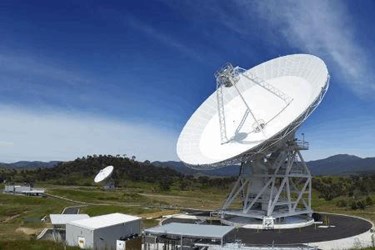Australia Unveils Antenna Supporting Mission To Mars
By Jof Enriquez,
Follow me on Twitter @jofenriq

The Commonwealth Scientific and Industrial Research Organisation (CSIRO), Australia's national science agency managing radio astronomy facilities, unveiled recently a satellite antenna that will support interplanetary missions – including upcoming missions to Mars spearheaded by the National Aeronautics and Space Administration (NASA).
The $91.6-million Deep Space Station 36 (DSS36) antenna at the Canberra Deep Space Communications Complex (CDSCC) is the second of two NASA antennas to be built at the facility (the other antenna, DSS35, launched in 2014).
Both antennas form part of NASA's Deep Space Network, which has facilities located at equidistant locations in California and Madrid to provide continuous line-of-sight communications with orbiting spacecraft as the Earth rotates.
Each of the two beam waveguide antennas at the Canberra facility has a 34-meter dish with underground transmitter receivers buried in a concrete cylinder two stories deep, according to Mashable.
"That further isolates the electronics," Glen Nagle, CDSCC's manager of education and public outreach, told the website. "It helps them to be a little bit more protected from radio frequency interference from around the local region and increase their overall sensitivity."
"Literally from the time the ground was broken to digging the hole, building the entire structure, it has been five years of effort building what is one of the finest instruments NASA will use for deep space exploration," Nagle told ABC. "This new antenna does give us additional capabilities to be able to array with other dishes so that we can combine their power to look at spacecraft even further away … and across higher frequencies as well."
The antenna has been operational for weeks, tracking more than 40 spacecraft missions. Nagle said the antenna's data return rates and accuracy have been "absolutely textbook."
"It is the critical lynchpin for us," NASA Associate Administrator Robert M. Lightfoot Jr. said in an interview with Huffington Post Australia. "We talk about being in space, but you don't go to space without having this on the ground to get the data back."
Australia has a half-century history of cooperation with NASA missions, and the CDSCC was involved in the first test flights of NASA's new Orion spacecraft, which is intended for deep space missions. The Canberra antennas are envisioned to play a large role in those missions, particularly NASA's planned moon landings, unmanned and manned missions to Mars, and even robotic missions to Europa, one of Jupiter’s moons.
"We are moving back to the era of human space flight beyond Earth orbit, one day returning humans to the Moon and then eventually onto the asteroids and off to Mars," Nagle told ABC. "NASA is already in the process of getting ready to send humans back to the sort of lunar space environment, and that will happen in the early 2020s at this stage."
To facilitate telecommunications to and from the Red Planet, NASA is also exploring the possibility of deploying commercial Mars-orbiting satellites. Mars landers and rovers currently transmit their science data and other information to Earth either by a direct communication link or via orbiting satellites acting as relay stations, which presents many challenges. Pairing ground-based and Earth-orbiting satellite networks with Mars-orbiting satellites could provide a more seamless data link.
